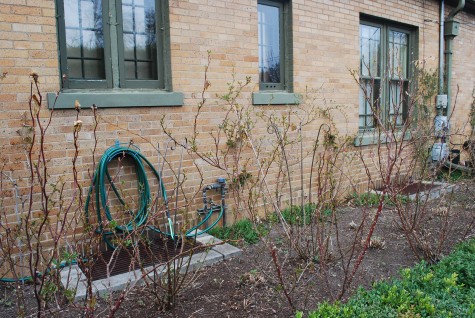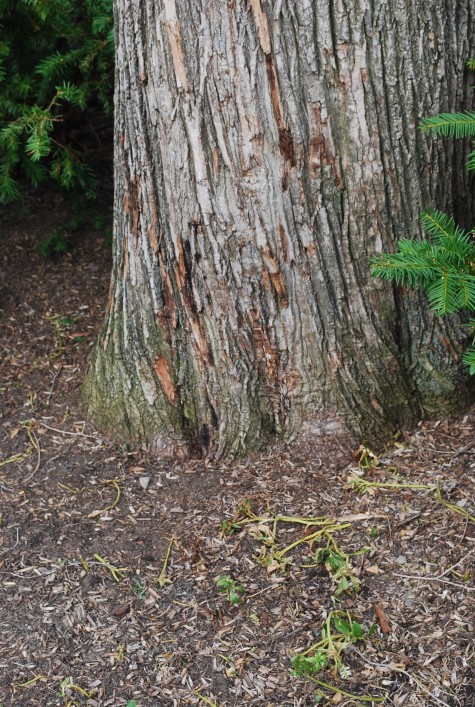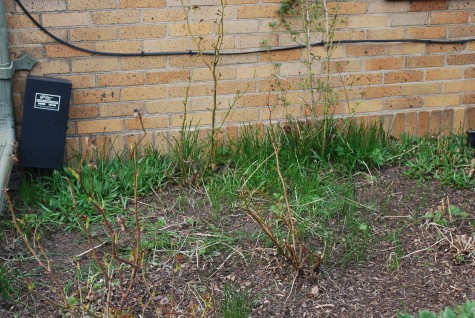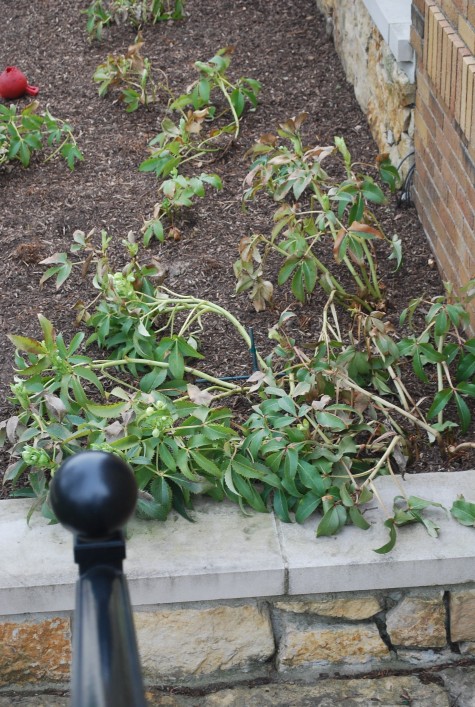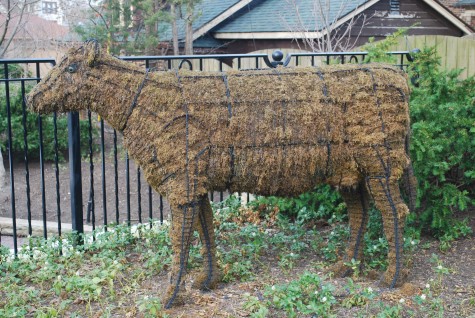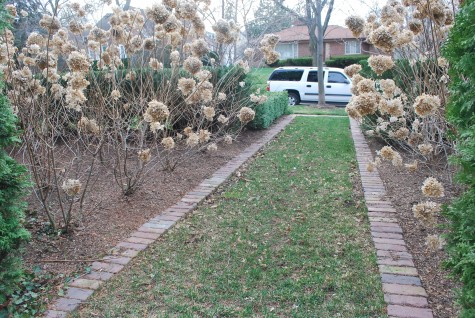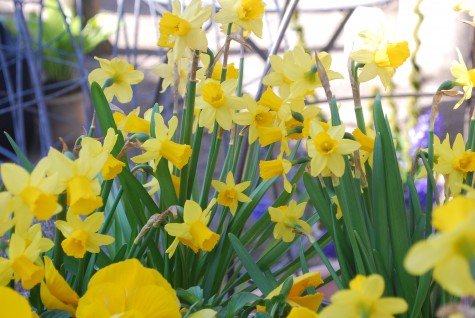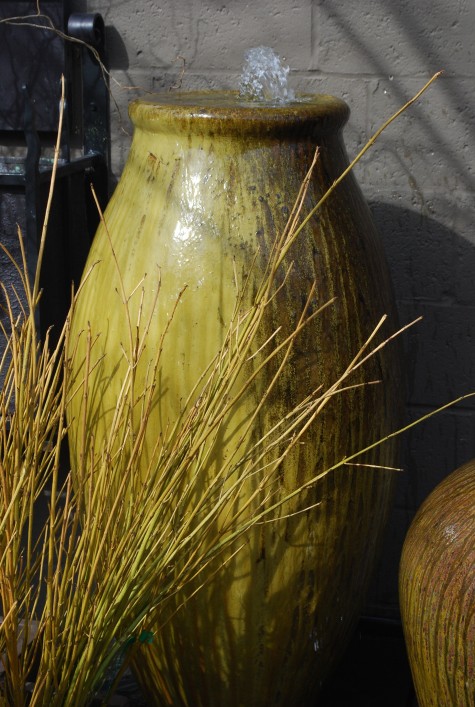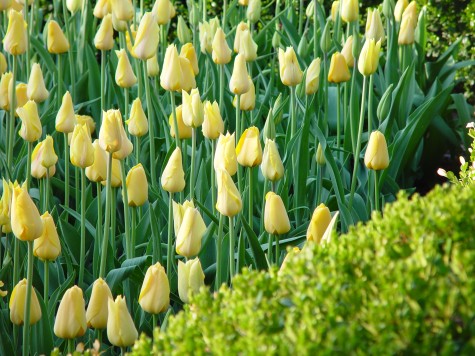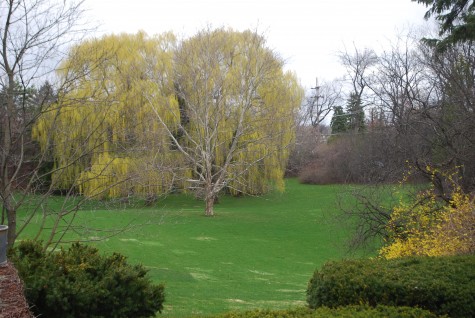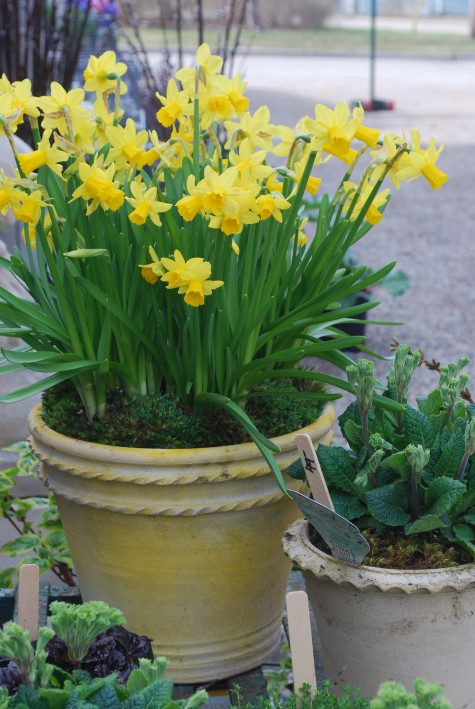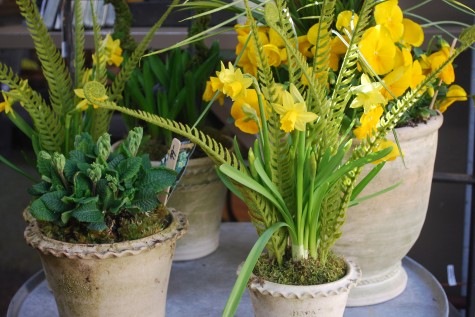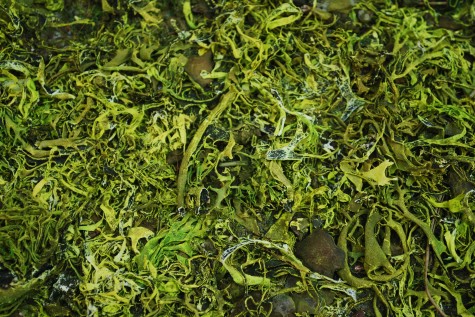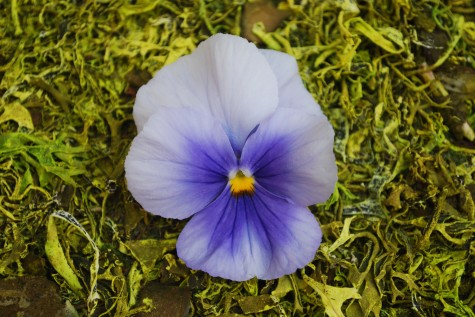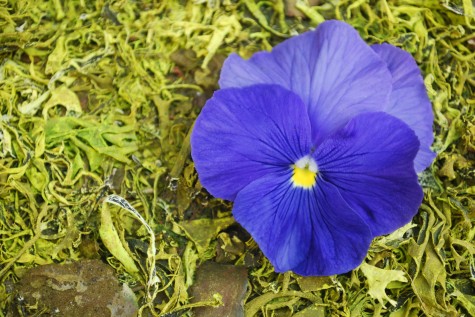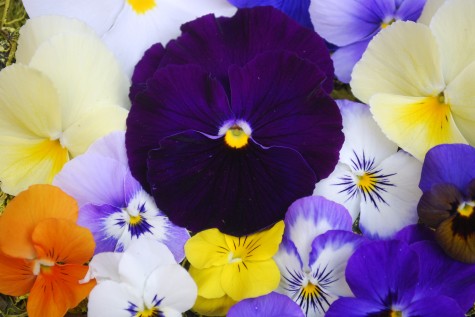Twenty years ago it would have been a routine fall to plant upwards of 30,000 bulbs for clients. At that time, I conducted my business from home-five acres in Orchard Lake, on a street full of five acre parcels. I was no bother to my neighbors; our houses were far apart, and private. The house was a wreck, but the property was beautiful-and big. The boxes would arrive in late September, each with its big full color picture of what the brown and cream blob inside would become the following spring. Bulb planting is not exactly satisfying work. You dig up the ground when everything else in the garden is going to sleep. When you are finished planting, all there is to see is the same dirt surface you started with. It seems like the planting was always accompanied by cold, windy and generally inhospitable weather. It did not seem like planting at all-we were burying all manner of small objects that bore no resemblance to the living. Bulbs may smell like they are alive, but the smell is not delicious like good soil, compost, dead leaves and worms. The anemone blandas bulbs were so hard and shrivelled one could hardly imagine anything good could come from them. These I would soak overnight before planting; there is nothing like adding the element of sopping wet to a cold gardening day. In short, there is nothing fun or festive about burying bulbs. I would look at those pictures on the boxes every so often, just to reassure myself that eventually the work would come to something beautiful.
The small bulbs-species and hybrid crocus, eranthis, galanthus, species tulips, anemone blanda, chionodoxa, scilla and so on-I would plant by the hundreds at a time. They would come packaged in yellow netted bags of 10 bulbs each. It was easy to hold 10 or better in one hand. I shouldn’t complain-they are vastly larger and easier to pick up one at a time than most seeds. The investment of time to get all these nut like objects a few inches underground on as chilly fall day was worth it, come spring. Pushing up through chilly soil into even chillier air, they are the only game in town in March and early April. It amazes me how these diminuitive plants with their delicate flowers are not only supremely robust, but they are incredibly persistent. A planting of white anemone blanda I did in rough grass twenty years ago is better now than it was then. I am embarassed to say the sum total of my small bulb planting last fall consisted of buying Rob a muscari mix from John Sheepers for Christmas. He planted them in a pair of concrete faux bois planters after New Years-they have been in bloom here at the shop for weeks; drop dead gorgeous.
With the exception of certain varieties of daffodils, the bigger bulbs are not so persistent. Even daffodils will arrive at that day when they need separating to maintain good flowering. I planted 1000 daffodils in the orchard meadow on that five acres every fall for 15 years. Some I bought at Franks nursery for a nickel a piece after Thanksgiving. Some were left over from the fall planting. I mostly planted the cream colored Ice Follies, and Old Pheasant’s Eye-my favorite. The last spring I spent there, heavenly. The digging and dividing is someone else’s job now. But I would bet that they will live a long time yet, even flowering poorly. Much poorer than declining daffodil clumps is the fact that I did not plant a single one last fall.
Tulips, the big frits, the hybrid hyacinths-their first year is their best year. Top size bubs produce top size flowers. I could dig and dry and replant and grow on-but the Dutch do a much better job of this than I ever could. It has become tougher to persuade a client to plant big drifts of tulips, knowing it probably will need to be done again the following year. I occasionally see a group of tulips that lasts five years, but rarely. Having just been in Chicago, where tulips and hyacinths were coming into bloom everywhere I looked, I’ve decided that the fact they need frequent replacement is not a very good reason to pass them up. After all, no one expects their non stop begonias or coleus to live a second season. Is it fivolous to plant fall bulbs? Maybe. But a little garden frivolity never hurt anyone. I am firm in my resolve to plant bulbs this fall-lots of them. I hope you do too. To follow-another picture of those pots with Rob’s muscari; this small planting has taken me by storm.


